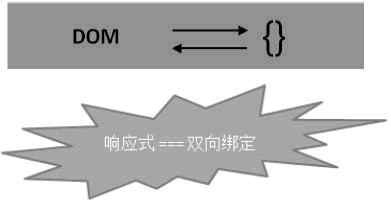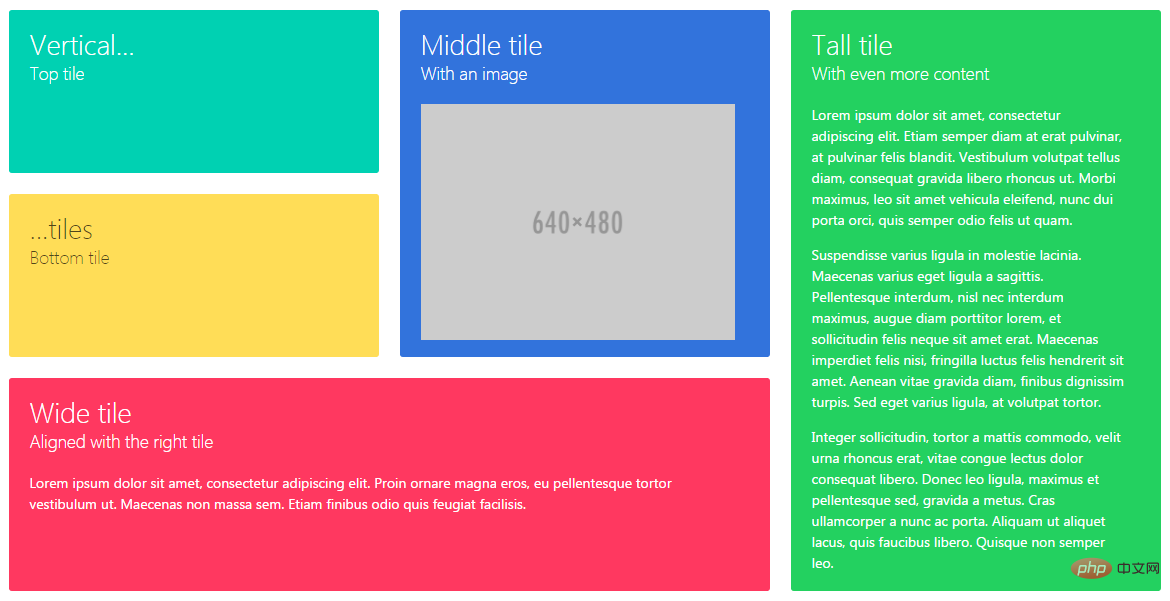
Difference: vuejs is a progressive JavaScript framework for building user interfaces. Its goal is to achieve responsive data binding and composable view components through the simplest possible API; while Bulma is a framework based on Flexbox A modern CSS framework for implementing a variety of simple or replicated responsive content layouts.

The operating environment of this tutorial: windows7 system, vue2.9.6 version, DELL G3 computer.
What is vuejs?
Vue.js (pronounced /vju:/, pronounced similar to view) is a progressive framework for building user interfaces. Unlike other heavyweight frameworks, Vue adopts a bottom-up incremental development design.
Vue’s core library only focuses on the view layer, and is very easy to learn and integrate with other libraries or existing projects. Vue is fully capable of powering complex single-page applications developed with single-file components and libraries supported by the Vue ecosystem.
Vue.js also provides MVVM data binding and a composable component system, with a simple and flexible API. Its goal is to achieve responsive data binding and composability through the simplest possible API. view component.
We can also say that Vue.js is a responsive system (Reactivity System). The data model layer (Model) is just an ordinary JavaScript object. As shown in the figure below, { } represents a JavaScript object. Modifying it updates the corresponding HTML fragment (DOM). These HTML fragments are also called "views". This will make state management very simple and intuitive, and can realize two-way binding of data, so we also call it a responsive system.

The main features of Vue.js
Vue.js is an excellent JavaScript library for front-end interface development. The reason why it is very Fire has many outstanding characteristics, the main ones of which are as follows.
1) Lightweight framework
Vue.js can automatically track dependent template expressions and calculated properties, provides MVVM data binding and a composable component system, with simple, The flexible API makes it easier for readers to understand and get started faster.
2) Two-way data binding
Declarative rendering is the main embodiment of two-way data binding, and is also the core of Vue.js. It allows declarative rendering of data using concise template syntax. Integrate into DOM.
3) Instructions
Vue.js interacts with the page, mainly through built-in instructions. The function of the instruction is to change certain behaviors accordingly when the value of its expression changes. Applied to the DOM.
4) Componentization
Component (Component) is one of the most powerful features of Vue.js. Components can extend HTML elements, encapsulating reusable code.
In Vue, parent-child components communicate through props, one-way transmission from parent to child. The child component communicates with the parent component and notifies the parent component of data changes by triggering events. This forms a basic father-child communication model.
When the components during development have a very close relationship with HTML, JavaScript, etc., the components can be customized according to actual needs, making development more convenient and greatly reducing the amount of code writing.
The component also supports hot reload. When we make changes, the page will not be refreshed, but the component itself will be reloaded immediately, without affecting the current state of the entire application. CSS also supports hot reloading.
5) Client-side routing
Vue-router is the official routing plug-in of Vue.js. It is deeply integrated with Vue.js and used to build single-page applications. Vue single-page applications are based on routing and components. Routing is used to set access paths and map paths and components. Traditional pages implement page switching and jumps through hyperlinks.
6) State management
State management is actually a one-way data flow. State drives the rendering of View, and the user operates the View to generate Action, which causes the State to change, thereby causing the View to Re-render to form a separate component.
What is bulma?
Bulma is a modern CSS framework based on Flexbox. The original intention of the design is Mobile First. The modular design can be easily used to implement various simple or copied responses. Style content layout, browser support: Browser support: Chrome, Edge, Firefox, Internet Explorer (10), Opera and Safari.
bulma has the following features:
Lightweight modern CSS framework, using Flexbox
Support responsive layout, grid, etc.
Pure CSS, no Javascript code
Customizable and modular
Advantages:
Provides responsive design for computers, tablets and mobile phones
Pure CSS framework, easy to use with JavaScript Framework integration, such as VueJS, ReactJS, etc.
Elegant and concise code
Running effect
Column example. Just add columns and they will automatically resize themselves

Magic tiles
Single element of Metro UI CSS grid

Related recommendations: 《vue.js tutorial》
The above is the detailed content of What is the difference between vuejs and bulma. For more information, please follow other related articles on the PHP Chinese website!